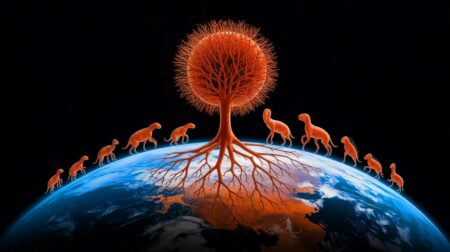Once, not that long ago in biological terms, lynxes prowled for prey in the forests of Britain. By now, however, most of those forests have been felled and the big cats were driven extinct in medieval times.
They don’t have to be gone forever, however. The concept of rewilding envisions the return of animals to environments where they once thrived and the reintroduction of large carnivores like lynxes can go a long way towards restoring at least a degree of biodiversity in countries like the United Kingdom.
Now an international team led by researchers at the University of Oxford’s Department of Biology, Wildlife Conservation Research Unit (WildCRU) and School of Geography and the Environment has the answers as to how best to accomplish this.
The scientists analysed data from almost 300 animal relocations between 2007 and 2021 across 22 countries on five continents, involving 18 different carnivore species such as bears, hyaenas, big cats and wild dogs. What they have found is that two-thirds of the relocations were successful insofar as the relocated animal survived in the wild for over six months.
“Success rates for large carnivore relocations have increased significantly since before 2007. For wild-born carnivores, success rates increased from 53% pre-2007 to 70%; and for captive-born animals, success rates doubled from 32% in pre-2007 to 64%,” the scientists explain.
“The species with the highest success rates included maned wolves, pumas, and ocelots which had a 100% success rate. The species with the lowest success rates (around 50%) were African lions, brown hyenas, cheetahs, Iberian lynx, and wolves.”
One way of boosting an animal’s chances of survival in a new environment is to acclimatise it to that environment before it is fully released. Releasing younger animals also increases success rates, probably because they can adapt better behaviourally and are less likely to have developed homing behaviours, the experts note.
“For animals born in captivity, the success rate decreased by 1.5-fold, compared with animals born in the wild. However, just over a third (37%) of the relocated animals were observed to find a mate and/or raise a cub in their new habitat,” they observe.
This relatively low level of mating success shows that rewilding efforts often face challenged, which is why it is particularly important to protect existing habitats.
“In the last 15 years we have become more successful at translocating and reintroducing large carnivores. This allows us to be optimistic for the future of rebuilding damaged ecosystems around the globe, but we must remember that it is always more important to protect large carnivore populations where they are now before we lose them,” says Seth Thomas, of the University of Oxford, who was the lead author of the study.
“Even as we have grown to be more successful, 34% of individual translocations fail and they cannot be seen as a replacement for immediate conservation action to save these populations,” Thomas adds.
As the UK is “one of the most nature-deprived countries in the world” in the words of the experts, reintroducing formerly native apex predators such as wolves and the Eurasian lynx could boost biodiversity, the scientists say.
“As the UN decade of ecosystem restoration gets underway, the ecological need and political appetite for relocations of large carnivores has never been greater, and they have the potential to contribute more now than ever before to biodiversity conservation,” says David Macdonald, a professor at WildCRU.
“By scrutinising the most geographically comprehensive sample of relocated large carnivores to date, our study makes plain to conservationists and policy makers the urgency of improving rewilding efforts.”
However, Alastair Driver, director of the charity Rewilding Britain, cautions that the reintroduction of lynxes to Britain is a relatively distant prospect.
“We still have a long way to go to overcome the misconceptions which dominate societal concerns around sharing our human-dominated landscape with other apex predators, but this report and the successes which it documents, will be hugely valuable in securing a more ‘grown-up’ discussion on the subject,” Driver says.
“I have no doubt that this will, in turn, lead to well-planned and implemented carnivore reintroductions which only 10 years ago, I would have thought inconceivable in my lifetime.”
Did you like it? 4.5/5 (26)








